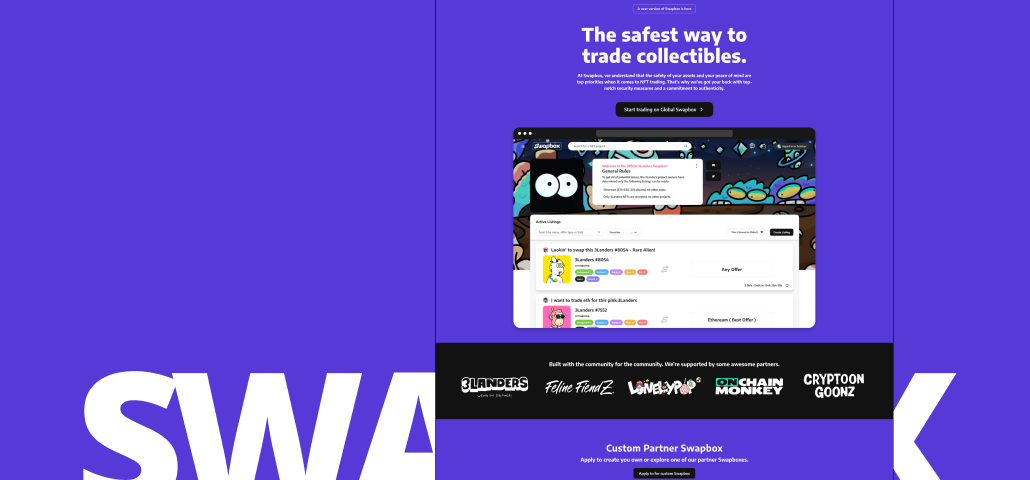Trade confidently.
Swapbox is a peer-to-peer platform for trading digital collectibles.

The challenge
The project began with the Swapbox team trying to answer:
• How can we make peer-to-peer trading of collectibles feel secure and intuitive?
• How can we create tools that build real trust between collectors?
In response, Swapbox introduced a platform centered on verified, one-to-one swaps with no middlemen. Collectors could connect directly, negotiate terms, and complete trades using tools designed around visibility and transparency. The goal was not just utility, but community.
Eevy Design Studio led the project across every phase. That included user research, branding, UX and interface design, front-end development, and marketing. As the platform evolved, Eevy continued adapting visuals and flows based on user behavior and partner feedback, ensuring that every update strengthened clarity, confidence, and usability.
Goals
Project vision statement: To provide collectors with a safe, direct, and engaging way to trade digital assets in real time.
User experience goals:
• Create a trusted exchange environment without platform risk
• Make trading feel simple, lightweight, and enjoyable
• Support live communication to build social trust between users
• Integrate feedback loops to refine usability for collectors of all levels
User interface goals:
• Design responsive UI optimized for desktop and mobile
• Highlight verified assets and partner community branding
• Align interface logic with underlying smart contracts
Understanding the client
Swapbox partnered with a range of collectible communities, each with unique branding and goals. Feedback loops with founders, moderators, and power users ensured the platform served their needs. Eevy facilitated this alignment by hosting regular review sessions and integrating fast iteration into design sprints.
Research
Initial research focused on competitor analysis, including tools like Yawww and Telegram bots. We studied community behavior, mapped common friction points, and interviewed collectors to understand what caused swaps to succeed or fail. This research helped shape Swapbox’s verified flow, partner portals, and trust-focused chat system.
Design process
The process began with wireframes and UI prototyping, followed by live beta testing. Feedback revealed key issues:
1. Users wanted more clarity during the swap confirmation step
2. Mobile wallet integration was inconsistent across chains
3. Community partners needed more ways to customize trade portals
How did we solve these problems?
We improved visual feedback during swaps by surfacing item metadata and user reputation status. Mobile wallet integration was rebuilt to support major EVM chains. And partner portals were redesigned with modular components, allowing each community to personalize their page while maintaining consistent trust signals across the platform.
Final result
Swapbox launched publicly with support from major collectible communities. It introduced real-time chat, secure swap flows, and branded trading portals. While the platform was later sunset due to shifting market conditions, the design remains a strong example of community-first UX and trust-based trading innovation.
